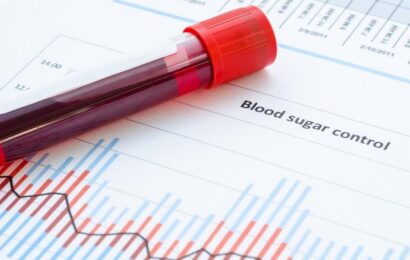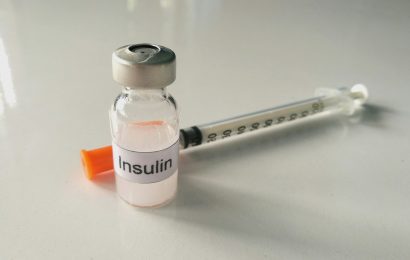Recently, I’ve received some questions and comments about artificial sweeteners, especially Splenda. So I thought I’d take this opportunity to write about Splenda and also to highlight a fairly new sweetener to the market called Nectresse (I’ll do that next week).
Before I get started, I should mention that Splenda and Nectresse are two nonnutritive sweeteners manufactured by the company McNeil Nutritionals. McNeil Nutritionals is a Johnson & Johnson company and its mission is “to give people the ability to actively manage their own health.” They also sell Lactaid (a line of lactose-free dairy products) and Viactiv (a brand of soft chew calcium and multivitamin supplements).
Splenda
Splenda is a brand name for sucralose, a popular nonnutritive (noncaloric) sweetener that was approved by the FDA in 1998 and is used worldwide in more than 4,000 foods and beverages. Interestingly, sucralose is made from chlorinated sucrose (sugar). We think of chlorine mainly as a chemical for pools, but it’s needed in the body to help maintain acid-base balance. (Many of the foods we eat contain chlorine, by the way, including sodium chloride (salt), cocoa powder, hot dogs, and frozen pizza).
The chlorine in Splenda helps to give this sweetener its intense sweetness: Splenda is 600 times sweeter than regular sugar. This sweetener provides no calories because, although it tastes like sugar, it’s not broken down in the body. In fact, it passes through the body pretty much unchanged. Splenda also has no effect on blood glucose levels because it’s not a carbohydrate source and, thus, is not broken down into glucose like sugar. Nonnutritive sweeteners, in general, have appeal because they don’t contribute calories and, for people with diabetes, they have no or minimal effect on blood glucose levels. Who doesn’t want to save a few hundred calories and maintain decent blood glucose levels at the same time?
Splenda is a very stable product that retains its sweetness over a wide range of temperatures (which means that you can bake and cook with it) and storage conditions. Food manufacturers love using this sweetener in their products for this reason. And pharmaceutical companies may use this sweetener in dietary supplements, medical foods and drinks, and medications. Your local grocery store carries a number of products sweetened with Splenda, including soft drinks, low-calorie fruit drinks, yogurt, cereal, and ice cream. Of course, you can purchase Splenda to be used as a tabletop sweetener, as well.
Splenda’s safety
One of the main concerns about any sweetener or additive is its safety. Whatever your thoughts and feelings might be about Splenda or any other sweetener, you might take some comfort in knowing that Splenda (like all FDA-approved sweeteners) has been tested in more than 100 studies over 20 years. These studies addressed issues such as birth defects, genetics, cancer, immunology, and the nervous system. None of these studies revealed any danger of using Splenda. If you give credence to Splenda’s Web site, you’ll read that there is no research supporting a link between Splenda and stomach upset, migraines, or problems with the kidneys or liver. And if it’s of interest to you, the American Diabetes Association and the Academy of Nutrition and Dietetics recognize Splenda as a safe and appropriate sweetener to use for people with diabetes.
While the very existence of nonnutritive sweeteners is controversial, even more controversy swarmed around Splenda last month. The Center for Science in the Public Interest (CSPI), which is a nonprofit consumer watchdog group, downgraded Splenda’s rating from “safe” to “caution.” (As an aside, CSPI publishes a newsletter called the Nutrition Action Healthletter, a very consumer-oriented and factual magazine about all things nutrition. They deem aspartame and acesulfame-K, two other nonnutritive sweeteners to be unsafe). The reason? Italian researchers found that sucralose caused leukemia in mice. However, this study has not yet been published and it has not been reviewed by other researchers.
Also, it’s important to keep in mind that studies done with rodents are often not applicable to humans. Another thing we don’t know is whether the mice may have developed leukemia from another cause, like old age. So it’s too soon to draw conclusions from this particular study that Splenda is unsafe. And even CSPI recognizes that diet soda, sweetened with nonnutritive sweeteners, is a far better choice than drinking sugar-sweetened drinks which may contribute to obesity, Type 2 diabetes, heart disease, and tooth decay. They’re proponents of drinking water, seltzer water, and unsweetened iced tea. It’s also wise to note that CSPI labels caffeine with a “certain people should avoid” label, because it can cause jitteriness and problems with sleeping.
It’s understandable to feel somewhat uncomfortable using a sweetener (or any product) that may have caused harm in a study. Some health experts and consumer advocates feel that Splenda has not been tested for a long enough period of time to really show if it’s safe or not. Others point out that Splenda’s chemical composition is similar to that of the pesticide DDT. You can find plenty of testimonials on the Sucralose Toxicity Information Center about the horrible side effects allegedly caused by Splenda. But testimonials are not science, and often what these stories do is stir up more fear and misinformation. Certainly, if you don’t feel comfortable using Splenda and are concerned about possible side effects, it’s probably best not to use it. We’ll have to wait and see if well designed, longer-term studies can give us more reassurance as to its safety.
Next week: Nectresse!




